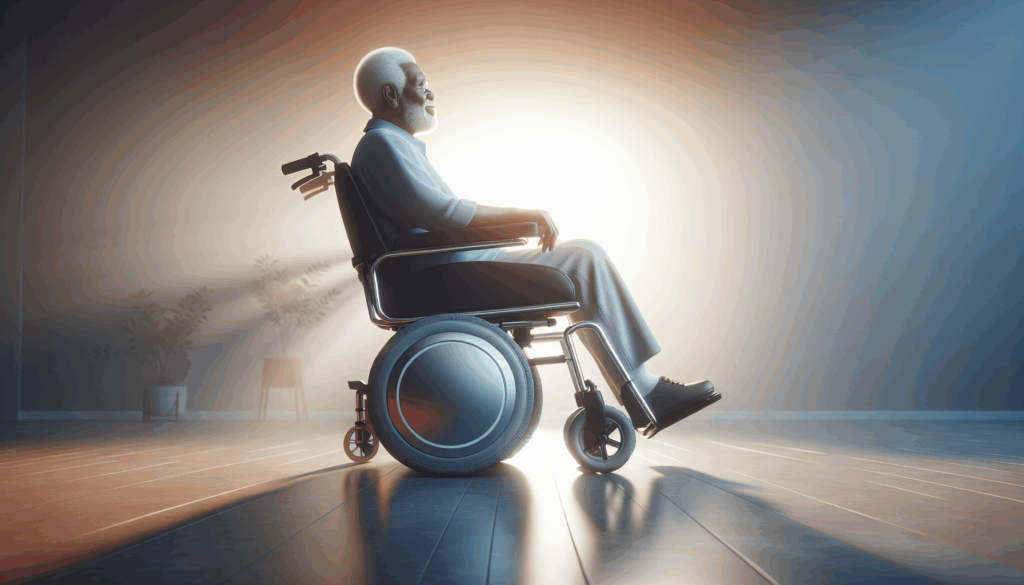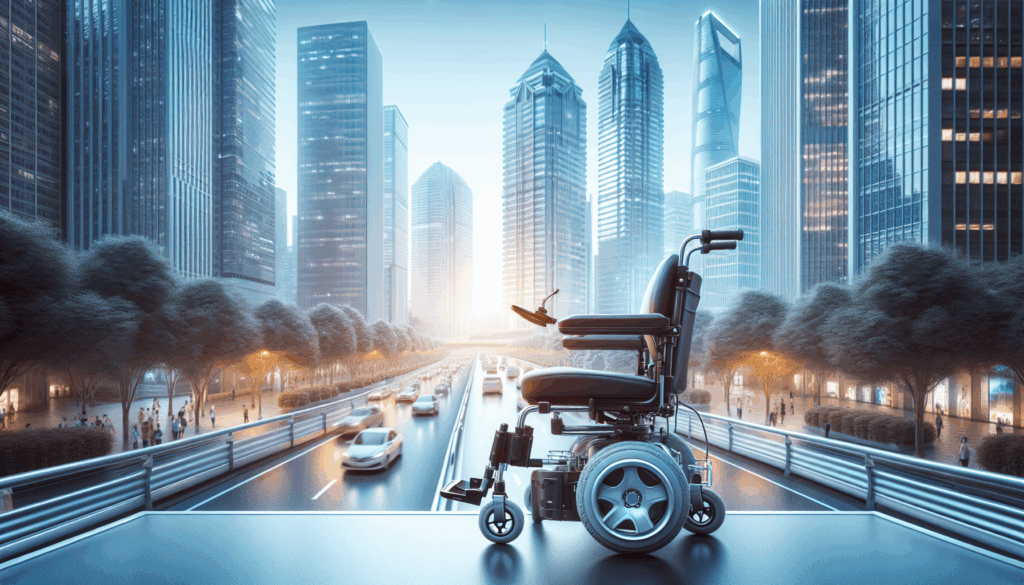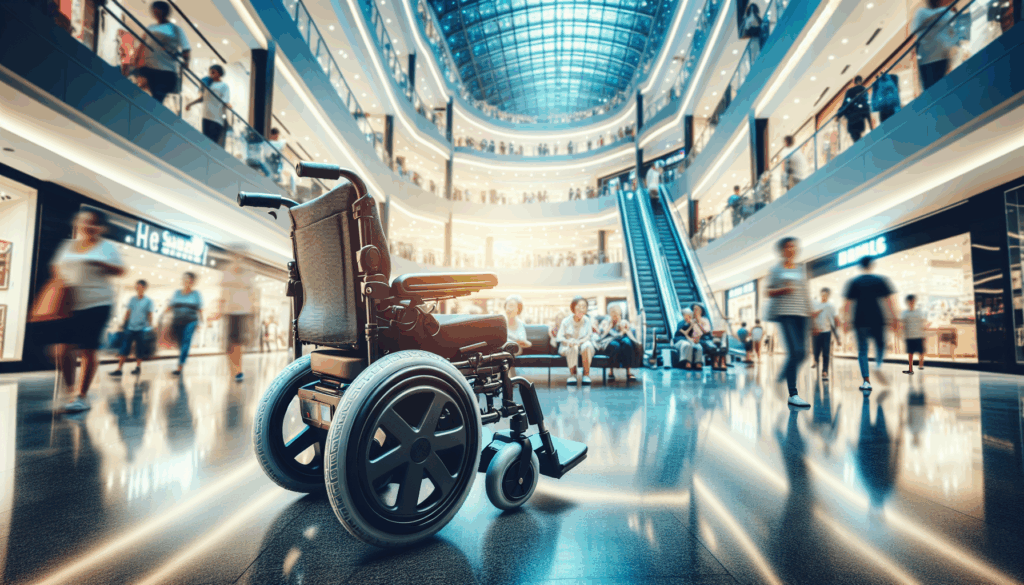
As the world evolves, so does the technology designed to enhance mobility for individuals with disabilities. Electric wheelchairs or e-wheelchairs have been at the forefront of this transformation, offering greater independence and accessibility to those who need them, including the elderly and individuals with mobility impairments. In this blog, we will delve into the pros and cons of electric wheelchairs, exploring their benefits and drawbacks, and discuss the essential amenities that cities should implement to create a more inclusive environment for e-wheelchair users. Join us as we explore how we are shaping the future of e-wheelchairs, paving the way for a more accessible tomorrow.
Understanding the Needs: Who Requires Electric Wheelchairs?
Electric wheelchairs are essential mobility devices for a wide range of individuals who face challenges with physical movement. Primarily, they benefit those with mobility impairments due to health conditions such as spinal cord injuries, multiple sclerosis, or cerebral palsy. Older adults who experience reduced strength or balance issues also find e-wheelchairs to be valuable aids that enhance their independence. Furthermore, people recovering from major surgeries may require temporary support, making these innovative devices crucial in facilitating mobility even during rehabilitation. It’s clear that the need for e-wheelchairs extends across various demographics, enhancing the quality of life for many.
The pros of e-wheelchairs are numerous, including their ease of use, versatility, and ability to navigate diverse terrains, which helps users participate more actively in daily life. However, there are some cons to consider, such as their higher cost compared to manual wheelchairs and the potential for mechanical failures. Cities must adapt their infrastructure to accommodate e-wheelchair users by ensuring accessible public spaces, including ramps, wide doorways, and smooth pavements. These amenities will not only support users with electric wheelchairs but also promote an inclusive environment for everyone, paving the way for a more accessible future.
The Advantages of Electric Wheelchairs: Freedom and Mobility
Electric wheelchairs offer a transformative solution for individuals who have mobility limitations, providing them with the opportunity to regain independence and enhance their quality of life. Those who need an e-wheelchair vary from individuals with severe physical disabilities to the elderly who might struggle with mobility. The primary advantage of e-wheelchairs lies in their ability to navigate various terrains with ease, allowing users to move freely both indoors and outdoors, unlike traditional manual wheelchairs that require significant physical exertion. Moreover, these electric devices often come equipped with features such as customizable seating, adjustable speeds, and advanced maneuverability, making them an ideal choice for a wide range of users seeking comfort and convenience.
However, it’s important to also consider the potential downsides, such as their cost and the need for maintenance, which can pose challenges for some users. To truly accommodate e-wheelchair users, cities must evolve by integrating appropriate amenities such as accessible ramps, wide doorways, and designated parking spaces. Public spaces should also prioritize smooth pavement and signage that is easy to read for those with mobility impairments. By fostering environments that support mobility devices, cities can play a pivotal role in enhancing the freedom and accessibility for e-wheelchair users, shaping a more inclusive future for all.
Challenges of Electric Wheelchairs: Weighing the Cons
While electric wheelchairs provide autonomy and mobility for individuals with limited physical abilities, they also present certain challenges that can discourage their use. One major concern is the cost; e-wheelchairs often come with a hefty price tag, which may not be covered entirely by insurance. Furthermore, the vehicle’s weight and battery reliance can complicate transport and storage, particularly in smaller homes or less accessible spaces. Additionally, users may experience anxiety over potential technical failures, particularly when outside or in unfamiliar environments. These issues can limit the usability and practicality of e-wheelchairs, prompting some to opt for manual alternatives.
Moreover, e-wheelchair users often face infrastructural barriers that can further inhibit their freedom of movement. Despite the increasing push for accessible city designs, many urban areas still lack the necessary amenities such as ramps, accessible public transportation, and reliable charging stations. This gap in infrastructure not only affects the typical experience of users but reinforces the stigma that often surrounds disability. Addressing these challenges requires collaboration among manufacturers, policymakers, and communities to create a more inclusive environment that supports the needs of e-wheelchair users.
Innovative Technologies in Electric Wheelchair Design
Innovative technologies are revolutionizing the design of electric wheelchairs, making them more user-friendly, efficient, and adaptable to individual needs. With advancements in battery technology, e-wheelchairs now feature lighter, more powerful batteries that offer extended ranges and faster charging times, allowing users to explore their surroundings with ease. Additionally, improved control mechanisms, such as joystick and touch-sensitive controls, have made maneuvering these devices simpler and more responsive, catering specifically to the needs of individuals with varying mobility levels. Features like customizable seating, adjustable leg rests, and ergonomic design further enhance comfort, making e-wheelchairs suitable for long-term use.
Beyond comfort and functionality, the integration of smart technologies is transforming electric wheelchairs into intelligent mobility solutions. Some models come equipped with GPS navigation, obstacle detection systems, and even connectivity features that allow users to sync with smartphones for real-time monitoring and updates. These innovations not only provide greater independence to users but also encourage greater inclusivity in public spaces. As cities evolve, they must adapt by improving accessibility infrastructure—such as accessible ramps, wider sidewalks, and electric charging stations—ensuring that electric wheelchair users can navigate urban environments safely and comfortably.

City Infrastructure: Amenities for Electric Wheelchair Users
Modern city infrastructure is increasingly being designed with amenities that cater to electric wheelchair users, promoting accessibility, independence, and inclusion. Key features include smooth, wide sidewalks with curb ramps for safe navigation, and accessible public transportation with low-floor buses, ramps, and secure wheelchair spaces. Public buildings and transit hubs are equipped with elevators, automatic doors, and step-free entrances. Charging stations for electric mobility devices are becoming more common in public areas, addressing range concerns.
Additionally, accessible public restrooms with ample space and safety features, inclusive parking spaces with extra room for lifts, and wayfinding tools such as mobile apps and tactile signage to enhance user experience. Recreation areas are also evolving with paved trails, adaptive equipment, and beach access mats, making urban spaces more inclusive for all.
User Stories: Transformative Experiences with Electric Wheelchairs
Electric wheelchairs have transformed the lives of many individuals who require mobility assistance, providing them with the freedom to navigate their environments with ease and independence. For those with limited mobility due to health conditions, injuries, or age, electric wheelchairs offer an essential means of getting around, allowing users to engage in daily activities that many of us take for granted. Those who need an electric wheelchair include seniors, individuals with disabilities, and those recovering from surgery, ensuring that they can participate in social events, run errands, and access public spaces comfortably and safely. The benefits of using electric wheelchairs are plentiful, including improved mobility, autonomy, and access to a variety of terrains.
However, potential users must also be aware of the cons, such as higher costs and potential maintenance issues. For cities to be truly accommodating to electric wheelchair users, essential amenities like accessible ramps, wide doorways, and well-maintained sidewalks must be prioritized. Inclusivity in urban design, combined with ongoing advocacy for better accessibility, can foster a more supportive environment for all, enabling electric wheelchair users to thrive within their communities and enhance their quality of life.
The Future of Accessibility: Trends in Electric Wheelchair Development
The future of accessibility is being shaped significantly by advancements in electric wheelchair development. As society increasingly recognizes the need for inclusivity, there is a growing demand for electric wheelchairs that cater to a wide range of users, including those with mobility impairments, elderly individuals, and people with chronic health conditions. This demand drives innovation, leading manufacturers to develop wheelchairs that not only provide enhanced mobility but also offer features such as smart technology, customizability, and improved battery life. These advancements are crucial in ensuring that electric wheelchairs are not just a form of transport but a means of empowerment, allowing users to engage more fully in their communities and lifestyles.
A major consideration in this evolution is the need for cities to adapt and accommodate electric wheelchair users effectively. Urban environments must prioritize features like curb cuts, accessible public transport, and relaxing areas equipped with ramps and smooth pathways to create a truly inclusive atmosphere. As electric wheelchairs become more common, cities will benefit from implementing smart technologies that integrate with these devices for navigation and safety. The collaboration between the development of electric wheelchairs and urban planning will ultimately shape a more accessible future, allowing all users to navigate their surroundings with ease and confidence.
Advocacy and Policy: Supporting Electric Wheelchair Accessibility
Advocacy and policy play a crucial role in supporting electric wheelchair accessibility for those who rely on them for mobility. Individuals who need electric wheelchairs often include seniors, people with disabilities, and those recovering from severe injuries or surgeries. As the population ages and more people face mobility challenges, the demand for electric wheelchairs continues to grow. Effective advocacy ensures that public policies are in place to meet this demand, allowing for accessible transportation options and improved quality of life for users. Policymakers can help bridge the gap by promoting initiatives that foster education, awareness, and funding for electric wheelchair users, as well as ensuring compliance with accessibility standards in public spaces.
The pros of electric wheelchairs include enhanced mobility, independence, and the ability to navigate various terrains with ease. However, challenges such as cost, maintenance, and navigating government regulations remain. To further support electric wheelchair users, cities must prioritize accessibility amenities. This includes implementing proper curb cuts, accessible public transportation options, and spacious sidewalks equipped with ramps. Ensuring that electric wheelchair users can navigate urban environments safely not only empowers individuals but also fosters a more inclusive society that welcomes everyone, regardless of their mobility needs.

Embracing a New Era for Electric Wheelchair Users
As we stand on the brink of a new era in mobility solutions, it’s evident that electric wheelchairs are no longer just a means of transport; they are empowering tools that enhance the quality of life for many individuals. Whether for the elderly, those with disabilities, or anyone requiring mobility assistance, electric wheelchairs offer independence and accessibility. Understanding the pros and cons of electric wheelchairs ensures users can make informed decisions about their mobility needs while also highlighting areas for improvement, such as the importance of urban planning that accommodates these devices.
To truly integrate electric wheelchairs into the fabric of our daily lives, cities must prioritize infrastructure that enhances usability, including smooth sidewalks, accessible ramps, and designated parking spaces. By advocating for these amenities, we create an inclusive environment where everyone has the opportunity to navigate their surroundings freely. The future of electric wheelchairs is bright and filled with potential, and it is crucial that we continue to innovate and push for improvements that will benefit all users.

I really appreciate this blog post on electric wheelchairs. It highlights the need for cities to adapt their infrastructure to accommodate e-wheelchair users, including accessible public spaces. This is crucial for enhancing mobility and accessibility for individuals with disabilities.
Dear Ng Wei Beng, thank you for appreciating our blog post on electric wheelchairs! We completely agree that accessible public spaces are crucial for individuals with disabilities. At Eko Life Malaysia, we strive to promote inclusive urban planning and support advocacy for electric wheelchair accessibility. If you have any further suggestions or concerns, please don’t hesitate to reach out to us at [email protected] or call us at +60 3-7890 3042. We’re here to help.
The blog post raises an important point about the need for inclusive urban planning. By doing so, cities can create a more accessible future for all users, especially those with disabilities. It’s time for us to think about accessibility in our urban planning strategies.
Thank you for sharing your thoughts, Tan Siew Hua. We couldn’t agree more on the importance of inclusive urban planning in creating a more accessible future for all users. At Eko Life Malaysia, we strive to provide quality products and services that cater to the needs of individuals with disabilities. If you have any recommendations or suggestions on how we can contribute to this cause, please don’t hesitate to reach out to us via [email protected] or +60 3-7890 3042. We’d love to hear from you!
The post’s discussion on innovative technologies in electric wheelchair design is impressive. The advancements in battery technology, improved control mechanisms, and smart features can greatly enhance the user experience. Looking forward to more innovations in this space!
Dear Low Ee Ping, thank you for sharing your enthusiasm for the evolving electric wheelchair technology. We couldn’t agree more – advancements in battery life, control mechanisms, and smart features can significantly enhance user experience. We’d love to hear more about your personal experiences with electric wheelchairs and what features you think would be most beneficial for future designs. If you’d like to share more, please feel free to email us at [email protected] or call +60 3-7890 3042. We’re always looking for feedback to improve our products and services.